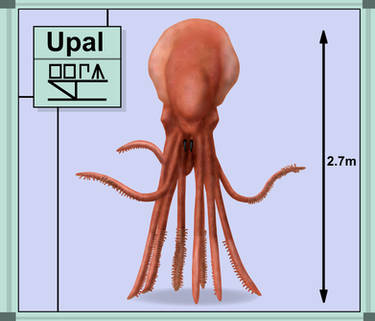Deviation Actions
Description
ATTENTION: the descriptions used in this chart are merely representatives of function. The names used (uterus, gametes, spermatozoa, nymph, etc.) were used due to the biological similarities to mechanisms known on terran life.
Enodocrura:
1. The frontal opening from which the genitals of the Enodocrura get exposed in the sexual act, and from where the nymphs are born.
2. A muscular barrier between the internal and external tissues.
3. The genetic material in the reproduction of the Enodocrura is divided in two parts: the (+) gamete, who carries 1/3 of the genetic material of the offspring and stays inside its body to be fecundated; and the (++) gamete, who carries 2/3 and leaves the body to fecundate another individual. In a game of strength, the individual more capable in the sexual act penetrates the more “passive” one, transferring most of the genetic material. The gamete (+) is fecundated in the “uterus” where it becomes a zygote (+++) that later transforms into an egg and then a nymph.
4. The penis of the Enodocrura is the structure that transfers the gamete (++) to its mating partner. To that function, it’s a strong and mobile organ that also is responsible by moving the newborn nymphs from its uterus to outside the body.
5. Organ that produces and stores the gamete (++).
6. Tissue responsible for producing the protein serum that will be fed to the newborn nymphs.
7. Protein serum sack.
B. The Enodocruras reproduce through cross-fertilization, similar to some snails: sexual reproduction with no sexual dimorphism. The fertilized egg then becomes a nymph inside the uterus.
C. The young nymphs are placed (with the help of the penis) in the lower parts of its body to feed on a “protein rich serum” that will be the building blocks to the body of the new Enodocrura. The hair filaments in this region are to protect the nymphs from the water of the nocturnal rains.
D. The growth of the Enodocrura’s nymphs are quick: in about 6 days, the nymph reaches maturity becoming a miniature of an adult.
Project: www.deviantart.com/sanrou/gall…
ho big are these fascinating animals as adults? also I was wondering how big are the juveniles once they finish all the stages?




































